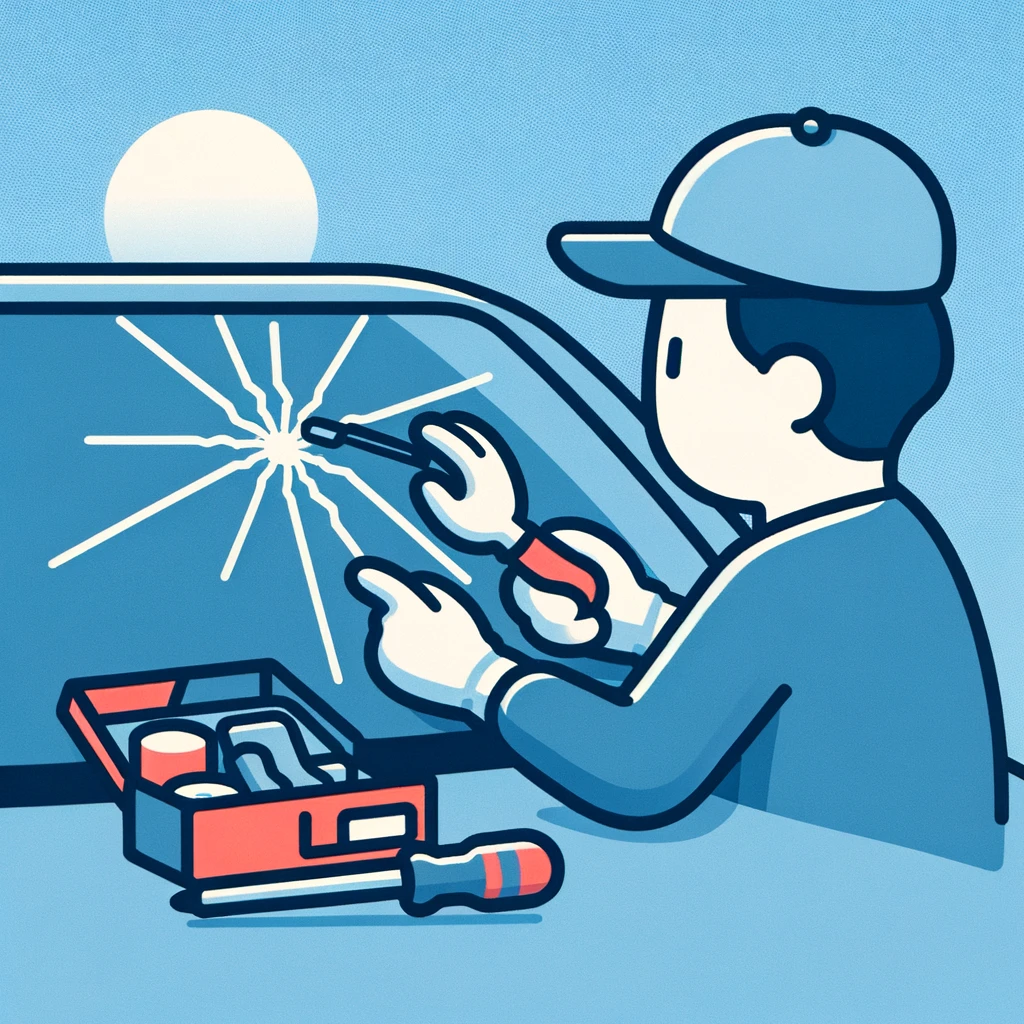A cracked windshield can be a significant nuisance, affecting your visibility and compromising your vehicle’s structural integrity. Addressing this issue promptly is crucial for safety and to avoid more extensive repairs. This guide will walk you through the steps to fix a cracked windshield, offering both DIY solutions and professional options.
Understanding the Types of Windshield Cracks
Before diving into the repair process, it’s essential to identify the type of crack on your windshield. Common types include:
- Bullseye: Circular damage with a central impact point.
- Star Break: Series of short radial cracks stemming from the impact point.
- Combination Break: Features of both bullseye and star breaks.
- Edge Crack: Starts within two inches of the windshield edge.
- Floater Crack: Begins in the middle of the windshield, away from the edges.
Assessing the Damage
Not all windshield cracks are repairable. If the crack is longer than a dollar bill, penetrates both layers of the glass, or is located in the driver’s line of sight, replacement is often necessary. For smaller cracks and chips, repair is a viable option.
DIY Windshield Repair Kits
For minor cracks and chips, a DIY windshield repair kit can be an effective solution. These kits are available at most auto parts stores and online. Here’s a step-by-step guide to using one:
Materials Needed:
- Windshield repair kit
- Safety gloves
- Clean cloth
Step-by-Step Guide:
- Clean the Area: Use a clean cloth to remove any dirt or debris from the crack.
- Prepare the Resin: Follow the instructions on your repair kit to prepare the resin.
- Apply the Resin: Use the applicator to inject the resin into the crack. Ensure the resin fills the entire crack.
- Cure the Resin: Place the curing strip over the crack and allow it to cure under direct sunlight for the recommended time.
- Remove Excess Resin: After curing, scrape off any excess resin with the razor blade provided in the kit.
Professional Repair and Replacement
For more extensive damage, seeking professional help is advisable. Professionals have the tools and expertise to ensure a proper repair or replacement.
When to Seek Professional Help:
- The crack is longer than a few inches.
- The damage is in the driver’s line of sight.
- The crack penetrates both layers of the windshield.
- DIY repairs have failed.
Preventing Future Windshield Cracks
Preventing cracks from occurring can save you time and money. Here are some tips to protect your windshield:
- Avoid Extreme Temperatures: Sudden temperature changes can cause the glass to expand and contract, leading to cracks.
- Drive Carefully: Avoid gravel roads and maintain a safe distance from other vehicles to prevent debris impact.
- Park Wisely: Park in shaded areas to avoid prolonged sun exposure and temperature fluctuations.
Conclusion
Fixing a cracked windshield promptly is essential for maintaining your vehicle’s safety and structural integrity. While DIY kits can handle minor cracks and chips, professional repair or replacement is necessary for more severe damage. By understanding the types of cracks and following the appropriate repair steps, you can ensure your windshield remains in good condition.
Remember, regular maintenance and taking preventive measures can help avoid future windshield damage, keeping you safe on the road.
FAQs
1. Can I drive with a cracked windshield?
- It’s not recommended to drive with a cracked windshield, especially if the crack obstructs your view or affects the structural integrity of the vehicle.
2. How much does it cost to repair a windshield crack?
- The cost can vary, but a DIY repair kit typically costs between $10 to $20, while professional repairs can range from $50 to $150.
3. Will my insurance cover windshield repair?
- Many insurance policies cover windshield repair or replacement. Check with your provider for details.
By following this comprehensive guide, you can effectively address and fix a cracked windshield, ensuring safety and clarity while driving.
